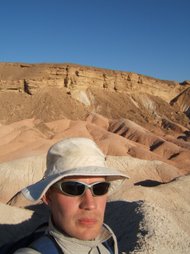Martin F. Chaplin presents an interesting overview on the structure of water1. Disappointingly, though, it seems to contain no useful evidence of a ‘water memory’ effect that would be relevant to the efficacy or otherwise of homeopathic treatments. As is well known, the probability of any dilution beyond about 12c (a dilution factor of 1x1024) containing a single molecule of the ‘mother tincture’ used to prepare the remedy is very low. So homeopaths require that water (or water/ethanol mixtures) somehow structurally ‘remember’ the mother tincture, and it is this structure that is responsible for any effect of homeopathic preparations. But Chaplin1 appears to be talking about an entirely different effect when he states that “If there is evidence that the history of a sample of water affects its properties, then the ‘memory of water’ concept is proven without the need for a rationale for its action” (p. 146). This apparently broad interpretation explains some of the examples given as “Evidence for the memory of water”, which otherwise appear to have little to do with homeopathic remedies, where the mother tincture must continue to influence water structure even when absent.
For example, Chaplin1 (p. 146) states that “human taste is quite capable of telling the difference between two glasses of water, processed in different ways (e.g. one fresh and one undrunk for several days)”. There is nothing mysterious about this. Depending on the circumstances, this can be due to outgassing of Cl2 and/or absorption of atmospheric CO2. This has nothing to do with how a mother tincture diluted out of existence has any effect on water structure. In the homeopathic context, what would be really interesting is if it were possible to taste the difference, say, between two 30c dilutions made from different mother tinctures prepared under identical conditions. Chaplin also refers to the Vybíral and Voráček paper in the special issue of Homeopathy2, stating that the authors “have shown that water changes its properties with time and its previous history”1 (p. 146). There is no doubt that this is an interesting paper, but the authors specifically conclude that their results are a consequence of ions dissolved in the water, as the effect they observe is not present when deionised water is used. Again, it is unclear how this is relevant to cases where mother tinctures are diluted out of existence. What Chaplin seems to be talking about in his paper is how impurities might affect water structure, as illustrated when he states “The water used for dilution is not pure relative to the putative concentration of the ‘active’ ingredient, with even the purest water considered grossly contaminated compared with the theoretical homeopathic dilution levels. This contamination may well have a major influence, and itself be influenced by the structuring in the water it encounters”1 (p. 148). Since the concentration of the mother tincture will always be dwarfed by the concentration of impurities, it is difficult to see why the mother tincture should have an effect more important than the impurities on the water structure. Homeopathic remedies are not ‘just water’: they will contain significant amounts of impurities, which might create interesting structures in the water. But how this would make them significantly different from any sample of water is not clear.
- Chaplin, M.F. The memory of water: an overview. Homeopathy 2007; 96: 143-150
- Vybíral, B. and Voráček, P. Long term structural effects in water: autothixotropy of water and its hysteresis. Homeopathy 2007; 96: 183–188.
- Shang, A., Huwiler-Müntener, K., Nartey, L., Jüni, P., Dörig, S., Sterne, J.A.C., Pewsner, D., Egger, M. Are the clinical effects of homoeopathy placebo effects? Comparitive study of placebo-controlled trials of homoeopathy and allopathy. Lancet 2005; 366: 726-732.

2 comments:
Hey. Great article. I found your site while reading about Martin Chaplin. I'm interested in the debunking of Homeopathy and you gave me some good ideas and directions.
Great blog ppost
Post a Comment